Biogenic Sections : Straw
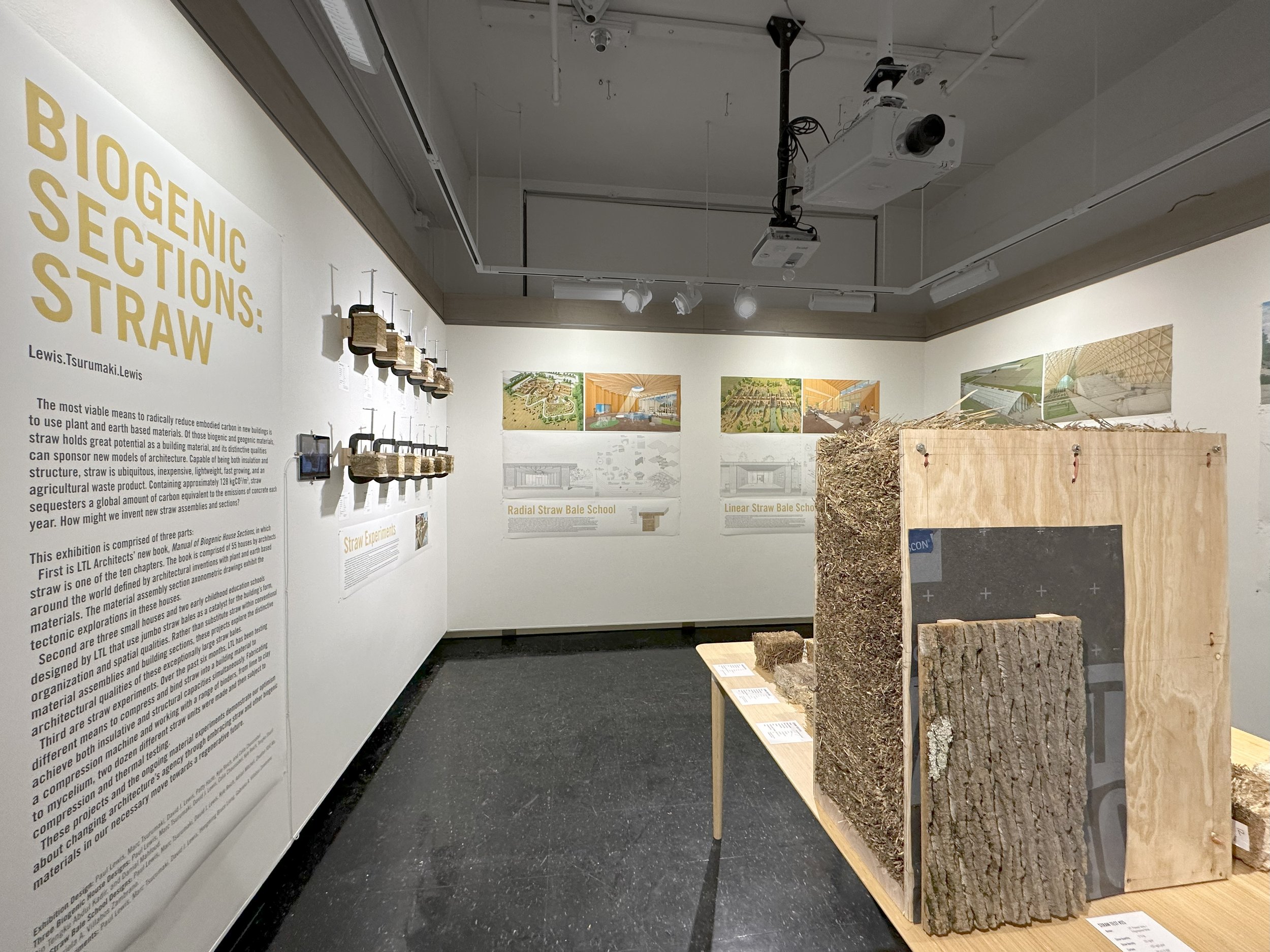
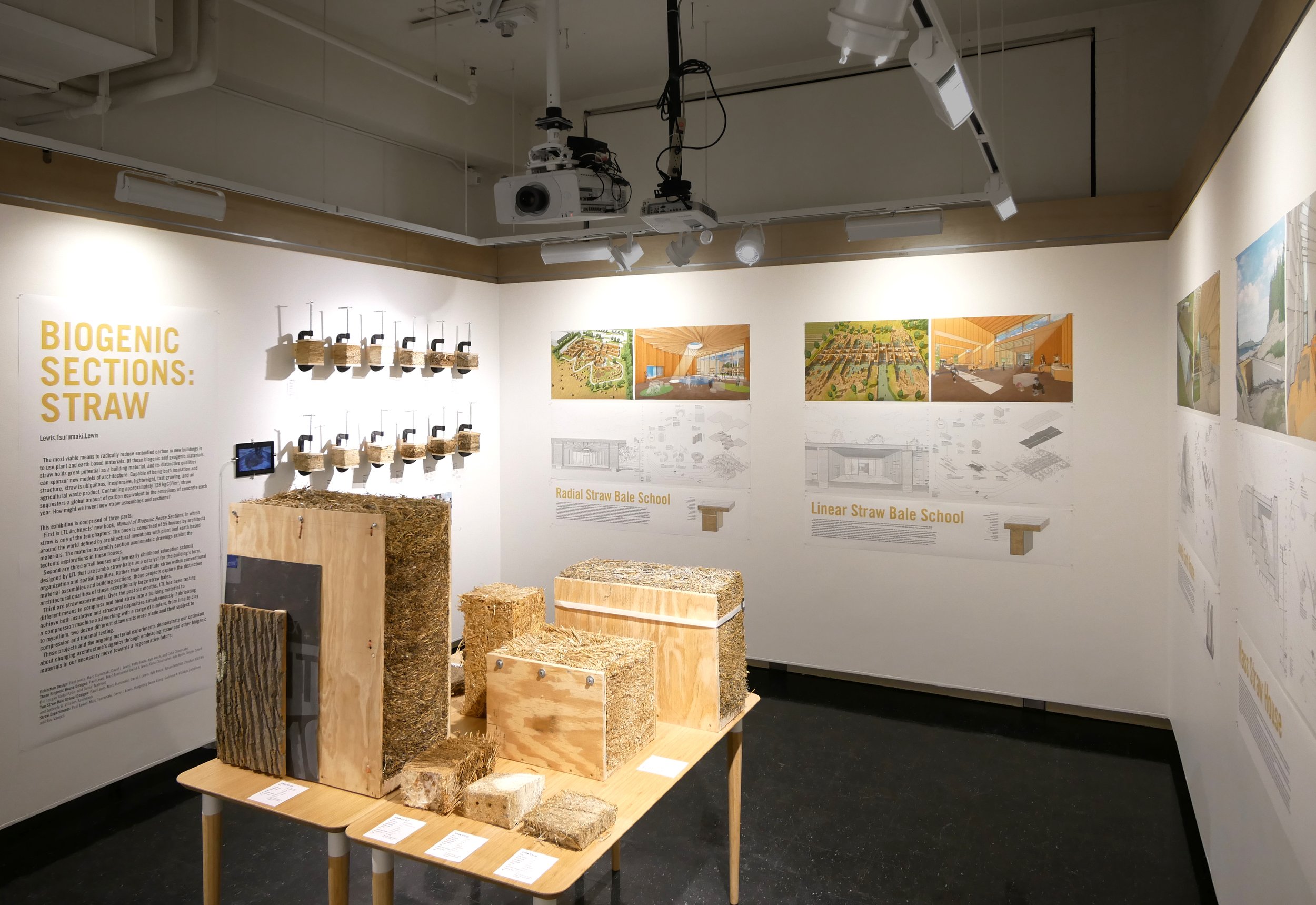

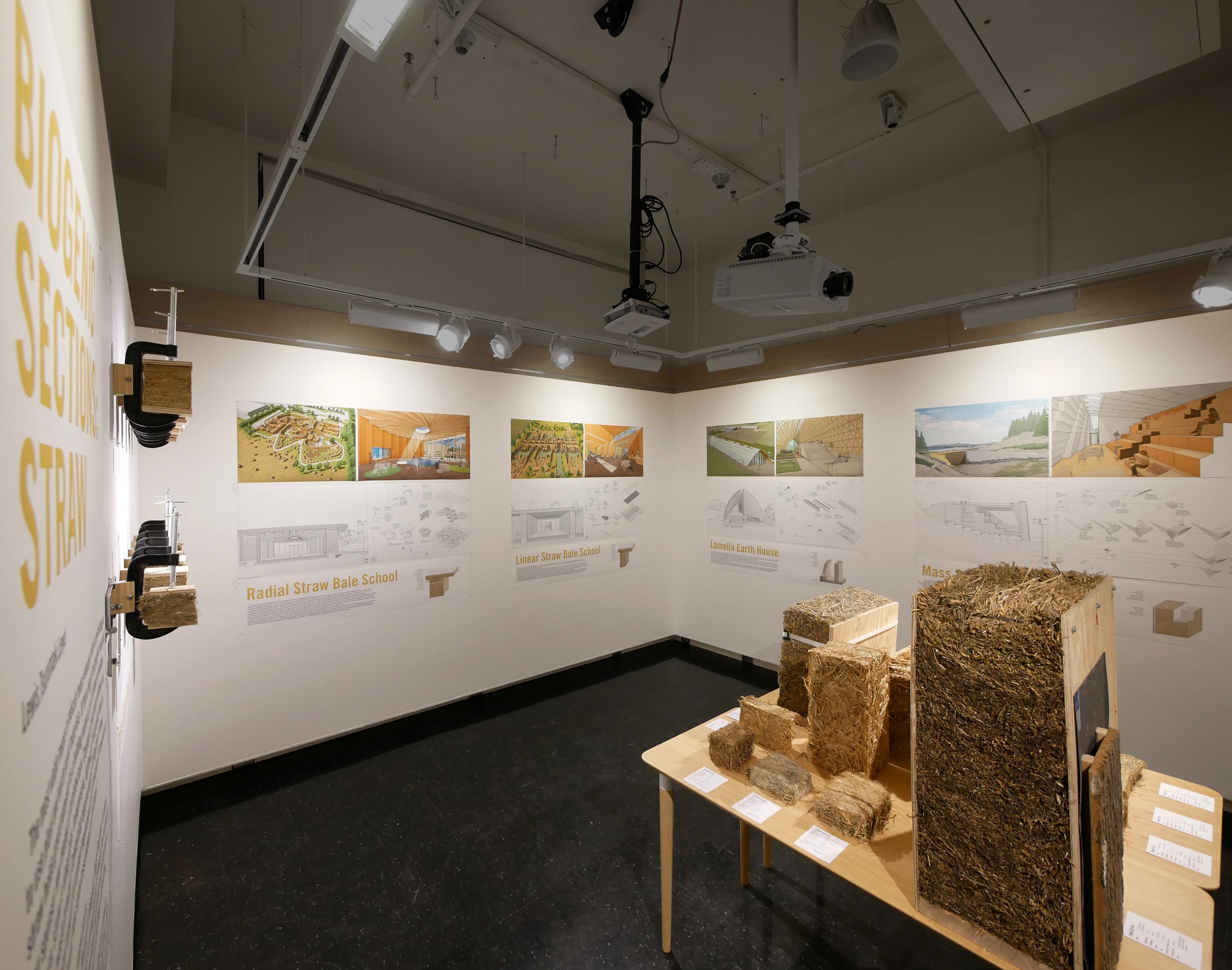
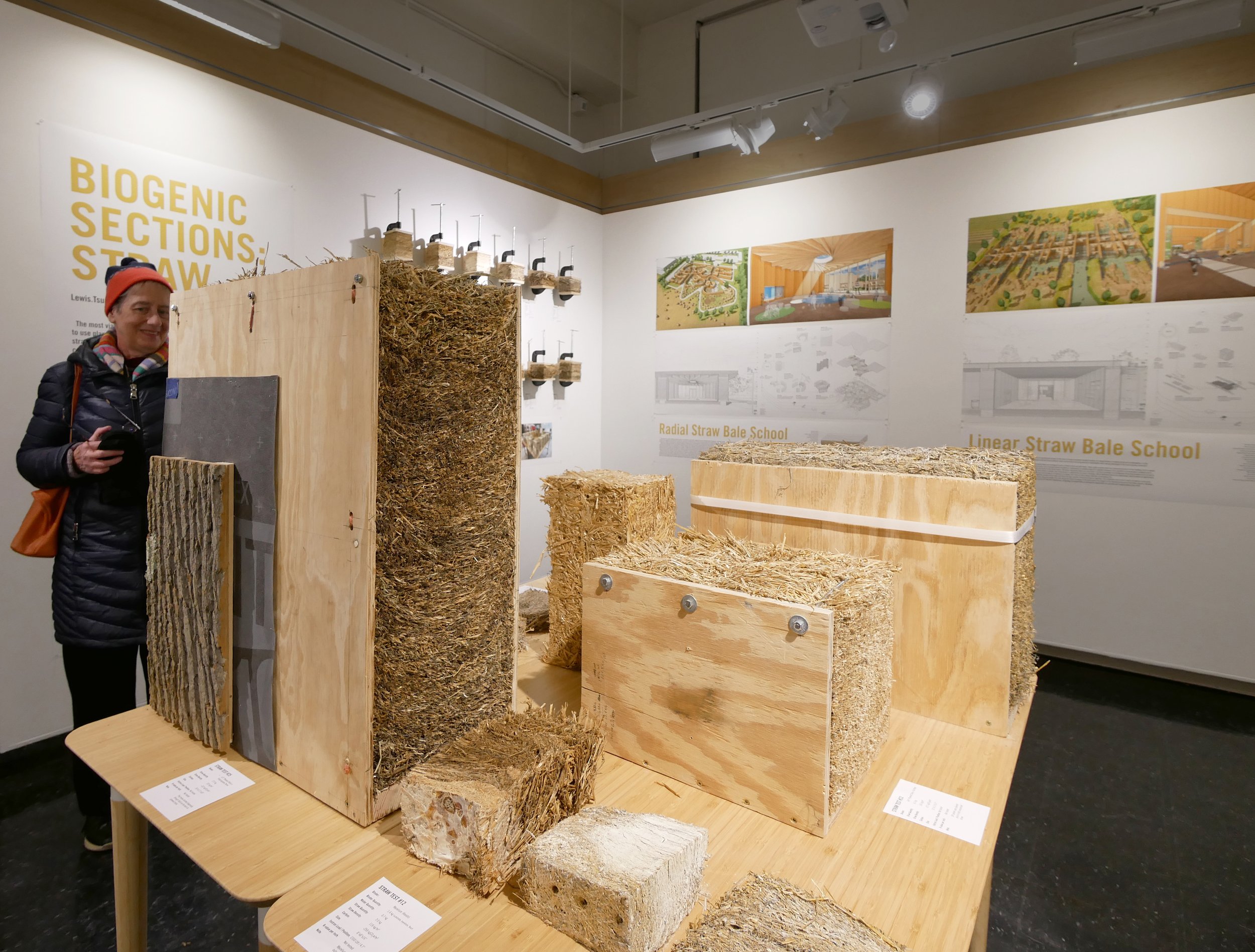

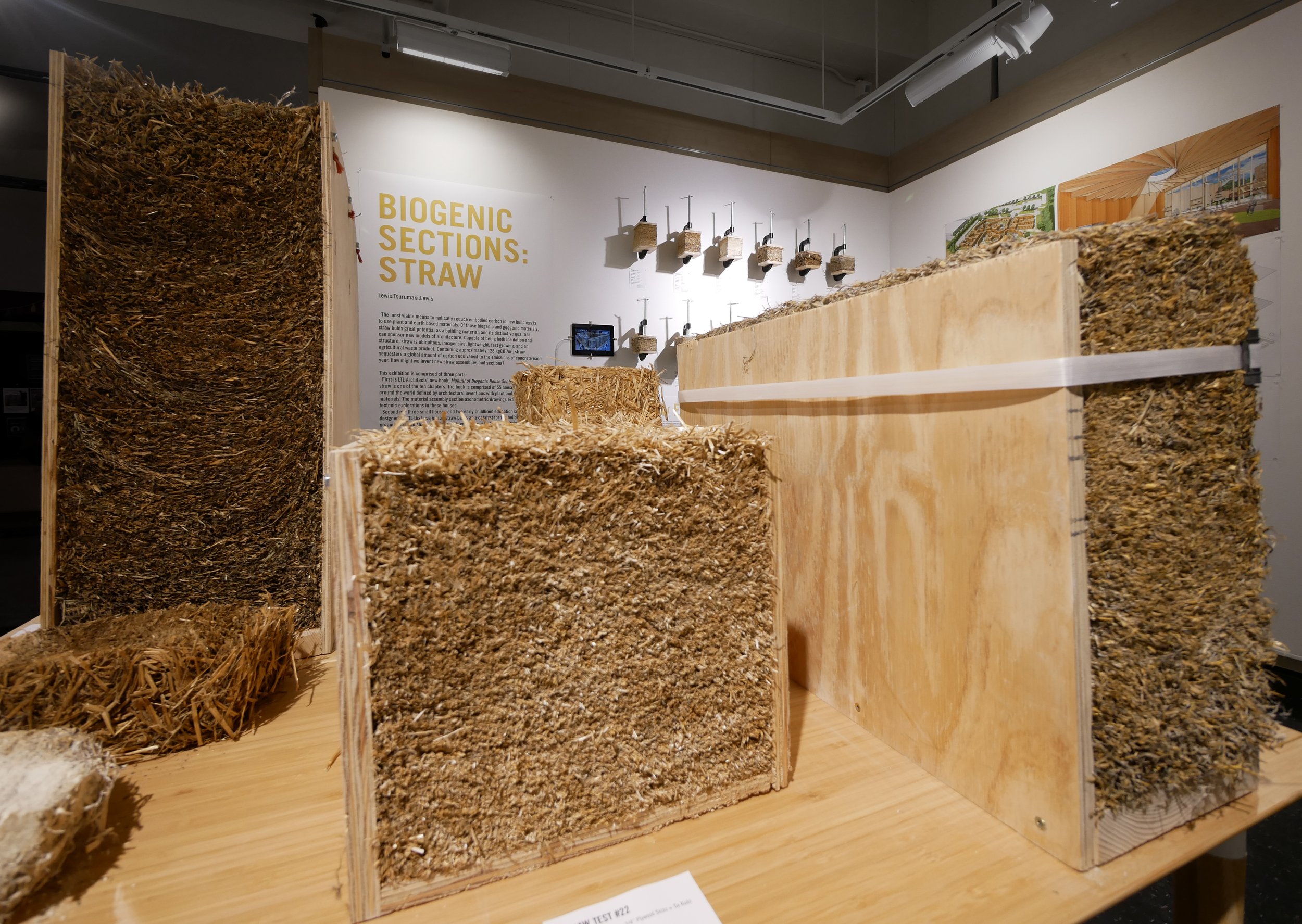
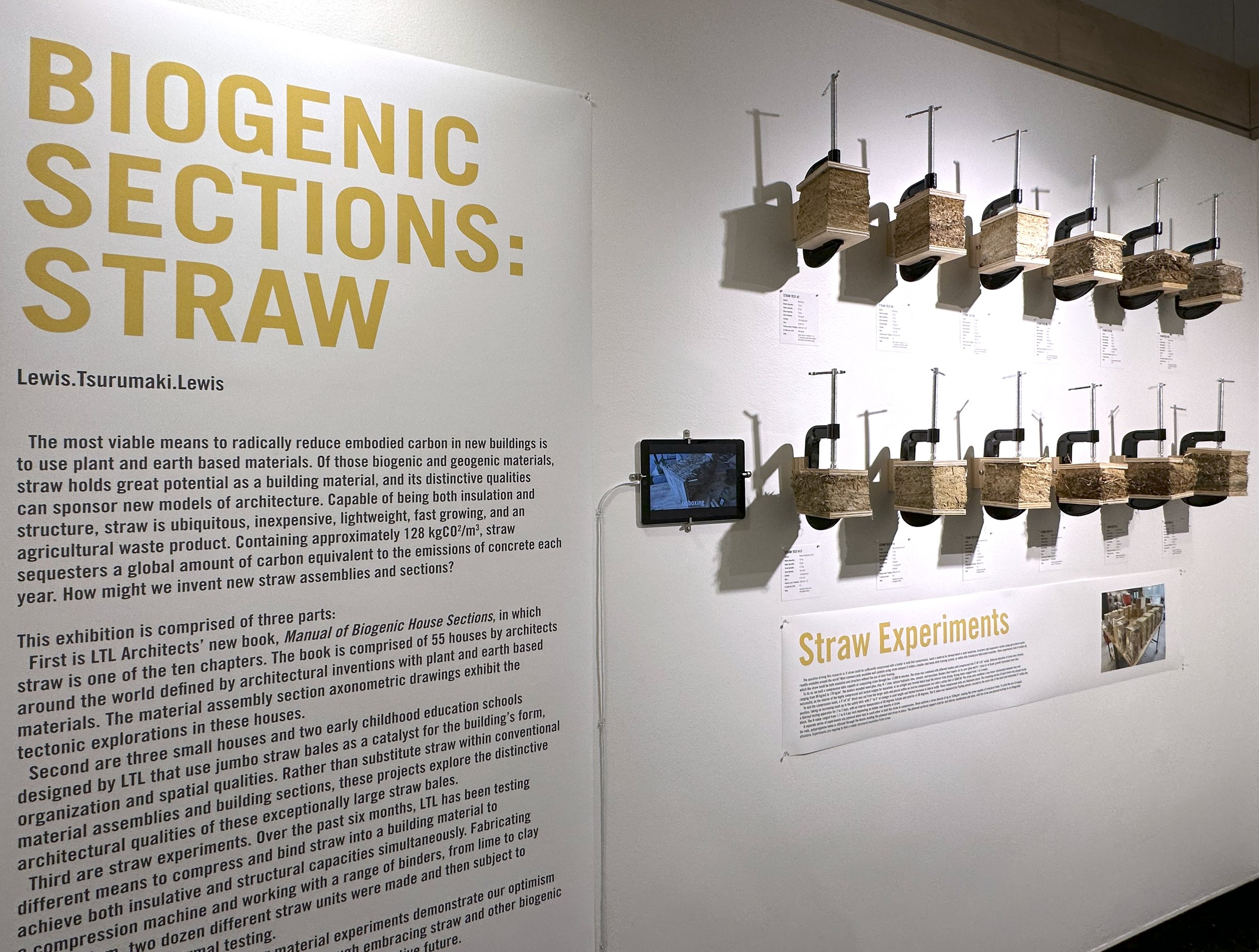

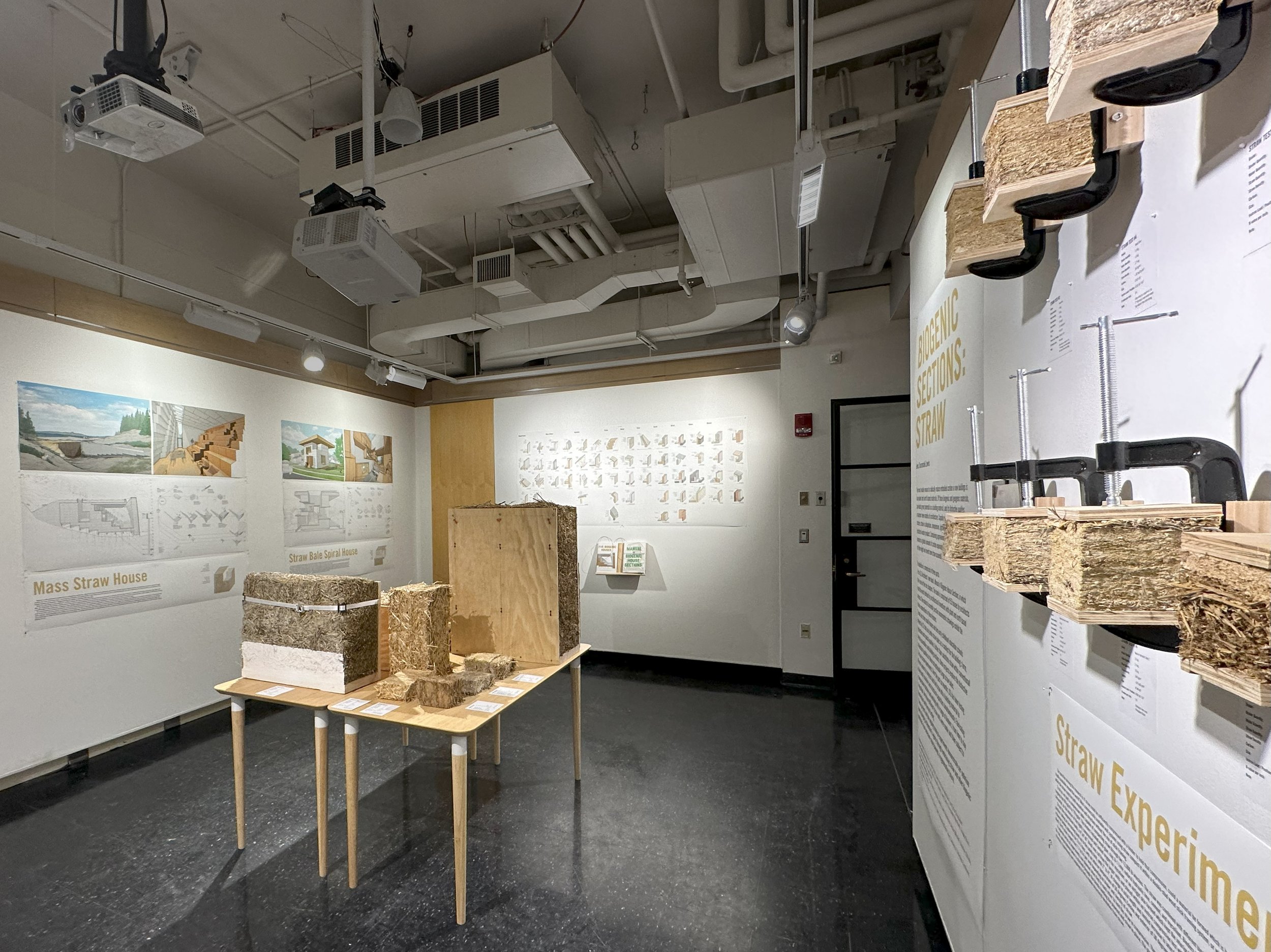
Biogenic Sections : Straw Exhibition
MIT School of Architecture and Planning, Keller Gallery, November 17, 2023 to January 5, 2024
The most viable means to radically reduce embodied carbon in new buildings is to use plant- and earth-based materials. Of those biogenic and geogenic materials, straw holds great potential as a building material, and its distinctive qualities can sponsor new models of architecture. Capable of being both insulation and structure, straw is ubiquitous, inexpensive, lightweight, fast growing, and an agricultural waste product. Containing approximately 128kgCO2/m3, straw sequesters globally each year an amount of carbon equivalent to the emissions of concrete. How might we invent new straw assemblies and sections?
This exhibition is comprised of three parts:
First is LTL’s new publication, Manual of Biogenic House Sections, of which straw is one of the ten chapters. The book is comprised of 55 houses by architects around the world defined by architectural inventions with plant and earth-based materials. The material assembly section axonometric drawings exhibit the tectonic explorations in these houses.
Second are three small houses and two early childhood education buildings designed by LTL Architects that use jumbo straw bales as a catalyst for the building’s form, organization and spatial qualities. Rather than substitute straw within conventional material assemblies and building sections, these projects leverage the thermal and structural potentials of these exceptionally large bales to challenge architectural assumptions of efficiency, permanence, and material optimization.
Third are straw experiments. Over the past six months, LTL has been testing different means to compress and bind straw into a building material to achieve both insulative and structural capacities simultaneously. Fabricating a compression machine and working with a range of binders, from lime to clay to mycelium, two dozen different straw units were made, and then subject to compression and thermal testing.
These projects and the ongoing material experiments demonstrate our optimism that by embracing straw and other biogenic materials we can amplify architecture’s agency in our necessary move towards a regenerative future.
Type
Credits
Exhibition Design: Paul Lewis, Marc Tsurumaki, David J. Lewis, Patty Hazle, Celia Chaussabel, and Kyle Reich
Three Biogenic House Designs: Paul Lewis, Marc Tsurumaki, David J. Lewis, Celia Chaussabel, Kyle Reich, Tengku Sharil Bin Tengku Abdul Kadir, and Danial Mahfoud.
Two Straw Bale School Designs: Paul Lewis, Marc Tsurumaki, David J. Lewis, Kyle Reich, Adrian Mitchell, Zhuofan JOJO Ma, and Gabriela A. Villabos Zambrano.
Straw Experiments: Paul Lewis, Marc Tsurumaki, David J. Lewis, Hongming Bruce Liang, Gabriela A. Villabos Zambrano, and Ava Vanech.
Thanks to: Nicholas de Monchaux, J. Yolande Daniels, and MIT School of Architecture + Planning for their support of the exhibition.
